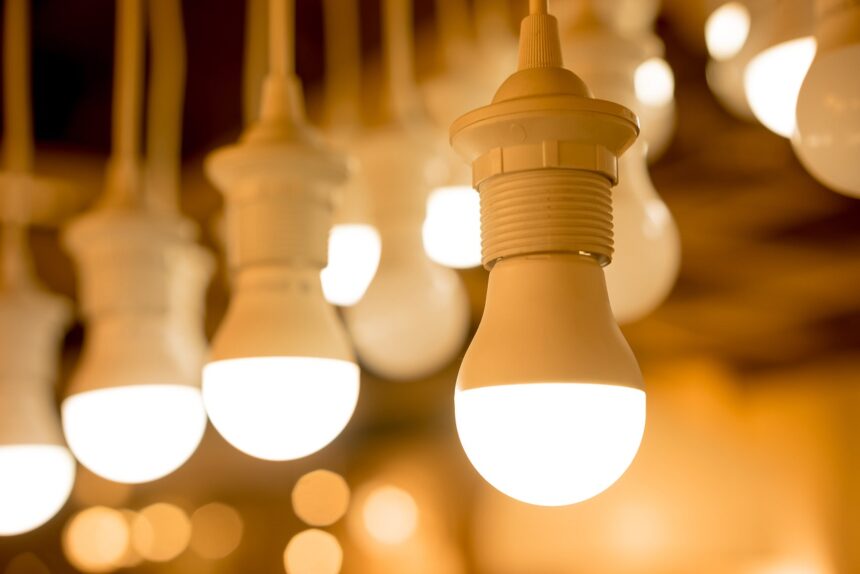In today’s rapidly evolving world, lighting technology has taken center stage in both residential and commercial environments. As consumers become more conscious of energy efficiency, sustainability, and innovative design, the demand for advanced lighting solutions continues to grow. This shift has paved the way for the prominence of the LED lighting manufacturer in the global market. LED lighting manufacturers are at the forefront of providing cutting-edge, energy-efficient lighting solutions that meet the diverse needs of consumers and businesses alike.
The Evolution of LED Lighting Technology
The history of LED lighting dates back several decades, but it wasn’t until the last 20 years that it truly began to revolutionize the lighting industry. LED lighting manufacturers have played a critical role in this transformation by developing technologies that are not only more efficient but also more versatile and longer-lasting than traditional lighting sources. These manufacturers have invested heavily in research and development, leading to the creation of LEDs that offer superior brightness, color accuracy, and longevity.
The shift from incandescent and fluorescent lighting to LED technology is largely driven by the advantages that LEDs offer. Unlike traditional lighting, LEDs consume significantly less energy, reducing both electricity bills and carbon footprints. Furthermore, LEDs have a longer lifespan, which reduces the need for frequent replacements, making them a cost-effective solution for both residential and commercial users.
The Importance of Innovation in LED Manufacturing
Innovation is the cornerstone of success for any LED lighting manufacturer. In an industry that is constantly evolving, staying ahead of the curve requires continuous improvement in product design, functionality, and efficiency. LED lighting manufacturers are constantly exploring new ways to enhance their products, whether through improved energy efficiency, better heat dissipation, or more sophisticated control systems.
One of the key areas of innovation in LED lighting is smart technology. LED lighting manufacturers are increasingly integrating smart features into their products, allowing users to control their lighting systems via smartphones, voice commands, or automation systems. This not only provides greater convenience but also contributes to energy savings by enabling more precise control over lighting conditions.
Moreover, LED lighting manufacturers are focusing on sustainability by developing eco-friendly products that minimize environmental impact. This includes using recyclable materials, reducing hazardous substances in production, and designing LEDs that require less energy to produce and operate. As a result, these manufacturers are helping to drive the global shift towards more sustainable practices in the lighting industry.
Customization and Flexibility in LED Lighting Solutions
One of the significant advantages of working with an LED lighting manufacturer is the ability to customize lighting solutions to meet specific needs. Whether it’s for architectural lighting, industrial applications, or residential use, LED lighting manufacturers offer a wide range of products that can be tailored to different environments and requirements.
Customization options include variations in color temperature, brightness, beam angle, and even the physical design of the lighting fixtures. LED lighting manufacturers understand that different spaces have different lighting needs, and they strive to provide solutions that enhance the aesthetic appeal and functionality of any space. This flexibility is particularly valuable in sectors such as hospitality, retail, and entertainment, where lighting plays a crucial role in creating the desired ambiance and experience.
Furthermore, LED lighting manufacturers often offer specialized products for niche markets. For example, they may produce LED lighting solutions designed specifically for horticulture, where the right spectrum of light can significantly impact plant growth. Similarly, manufacturers may develop LEDs for use in hazardous environments, such as oil rigs or chemical plants, where safety and durability are paramount.
The Role of Quality Assurance in LED Manufacturing
Quality assurance is a critical aspect of the production process for any LED lighting manufacturer. Ensuring that products meet high standards of performance, safety, and reliability is essential for maintaining customer trust and satisfaction. LED lighting manufacturers implement rigorous testing procedures at various stages of production to ensure that their products deliver consistent performance and meet regulatory requirements.
This commitment to quality extends to the materials used in manufacturing. LED lighting manufacturers select high-quality components that contribute to the overall durability and efficiency of their products. For instance, the use of premium-grade LEDs, robust heat sinks, and advanced optics ensures that the final product not only performs well but also has a long operational life.
In addition to internal testing, LED lighting manufacturers often seek third-party certifications to validate the quality and safety of their products. Certifications such as UL (Underwriters Laboratories), CE (Conformité Européenne), and Energy Star are widely recognized and provide assurance to customers that the products they are purchasing meet stringent quality standards. These certifications also help LED lighting manufacturers gain access to international markets, where compliance with local regulations is mandatory.
The Global Market for LED Lighting
The global market for LED lighting has experienced exponential growth over the past decade, and LED lighting manufacturers have been at the forefront of this expansion. The demand for energy-efficient lighting solutions has been driven by a combination of factors, including rising energy costs, increased environmental awareness, and government regulations aimed at reducing carbon emissions.
LED lighting manufacturers have responded to this demand by expanding their production capacities and developing new products that cater to a wide range of applications. Today, LEDs are used in everything from street lighting and automotive headlights to office spaces and residential homes. The versatility of LED technology has made it the preferred choice for both new installations and retrofits, as it offers a seamless way to upgrade existing lighting systems to more efficient alternatives.
Moreover, the global reach of LED lighting manufacturers has allowed them to tap into emerging markets where the adoption of LED technology is still in its early stages. In regions such as Asia, Africa, and Latin America, the shift towards LED lighting is being driven by the need for cost-effective and sustainable solutions to address growing energy demands. As a result, LED lighting manufacturers are not only contributing to global energy savings but also playing a role in improving access to reliable lighting in underserved communities.
Challenges Faced by LED Lighting Manufacturers
Despite the many opportunities in the LED lighting industry, LED lighting manufacturers face several challenges that require careful navigation. One of the primary challenges is the competitive nature of the market. With numerous manufacturers vying for market share, differentiating products through innovation, quality, and customer service is essential for success.
Another challenge is the rapid pace of technological advancements. LED lighting manufacturers must continuously invest in research and development to keep up with the latest trends and ensure that their products remain relevant in an ever-changing market. This includes staying abreast of developments in smart lighting, IoT integration, and energy-efficient technologies.
Supply chain management is another critical challenge for LED lighting manufacturers. The production of LEDs involves sourcing various components from different suppliers, and any disruptions in the supply chain can impact production timelines and costs. To mitigate this risk, manufacturers often establish strong relationships with reliable suppliers and maintain flexible supply chain strategies.
Lastly, LED lighting manufacturers must navigate the complex regulatory landscape of the lighting industry. Compliance with international standards and local regulations is mandatory, and any lapses can result in costly fines or loss of market access. As such, manufacturers must stay informed about regulatory changes and ensure that their products meet all necessary requirements.
The Future of LED Lighting
The future of LED lighting is bright, with continued advancements expected to further enhance the capabilities and applications of this technology. LED lighting manufacturers are poised to lead the way in developing next-generation lighting solutions that are even more energy-efficient, sustainable, and versatile.
One of the key trends shaping the future of LED lighting is the integration of smart technology. As the Internet of Things (IoT) continues to expand, LED lighting manufacturers are increasingly incorporating smart features into their products, enabling greater control, automation, and customization. This trend is expected to drive the adoption of smart lighting systems in both residential and commercial settings, offering users enhanced convenience and energy savings.
Another trend is the development of human-centric lighting, which focuses on improving the well-being of individuals by mimicking natural light patterns. LED lighting manufacturers are exploring ways to create lighting solutions that can positively impact mood, productivity, and health by adjusting color temperatures and intensities throughout the day. This approach is particularly relevant in environments such as offices, schools, and healthcare facilities, where lighting can significantly influence the well-being of occupants.
Sustainability will continue to be a driving force in the LED lighting industry. LED lighting manufacturers are expected to develop even more eco-friendly products, with a focus on reducing energy consumption, minimizing waste, and using sustainable materials. Additionally, the trend towards circular economy practices, such as product recycling and refurbishment, is likely to gain traction as manufacturers seek to reduce their environmental impact.
Conclusion
In conclusion, LED lighting manufacturers play a pivotal role in the modern lighting industry, driving innovation and delivering energy-efficient, sustainable solutions that meet the needs of a diverse range of customers. From developing cutting-edge technologies to ensuring the highest standards of quality, these manufacturers are at the forefront of shaping the future of illumination.
As the demand for advanced lighting solutions continues to grow, LED lighting manufacturers will remain critical to the global shift towards more sustainable and efficient lighting. By staying ahead of industry trends, embracing innovation, and maintaining a commitment to quality, these manufacturers are well-positioned to lead the way in the next generation of lighting technology.







